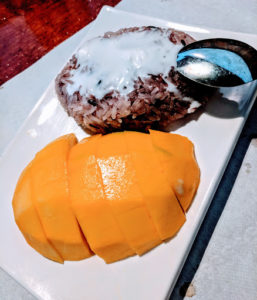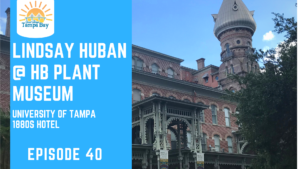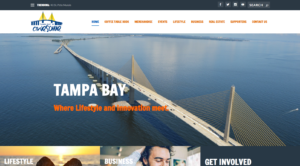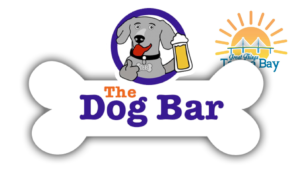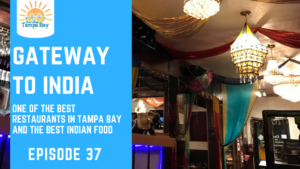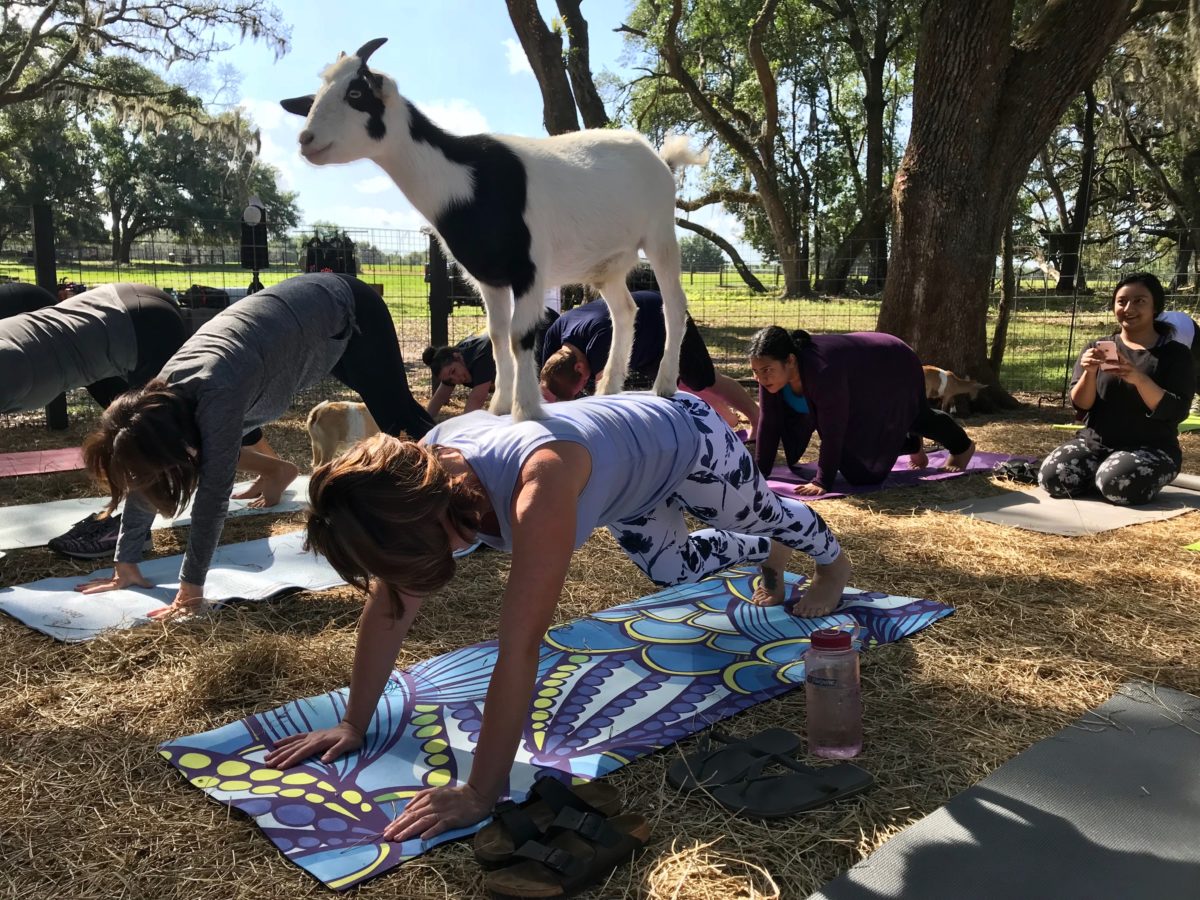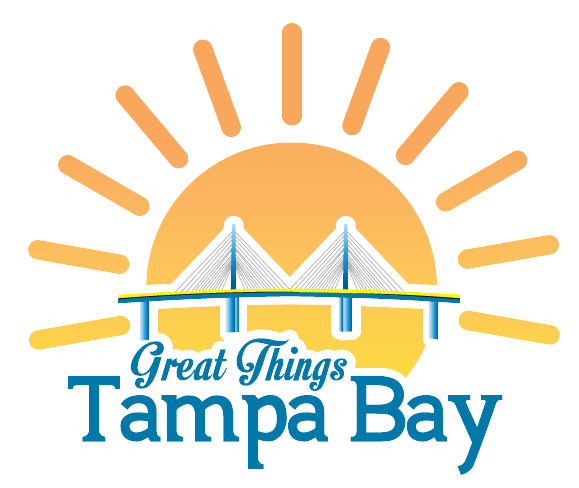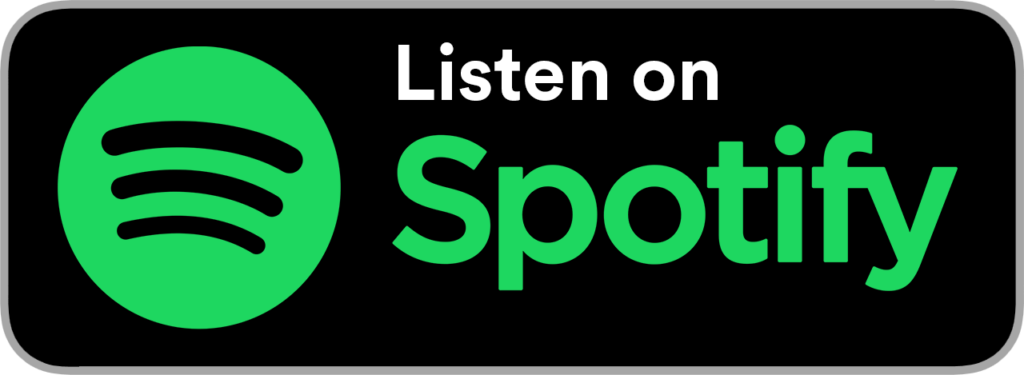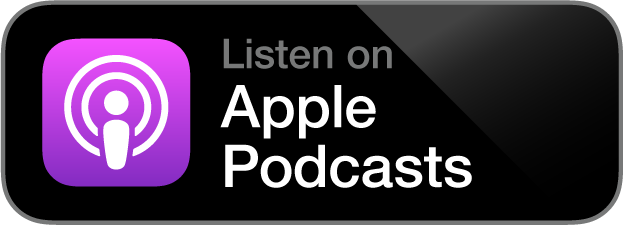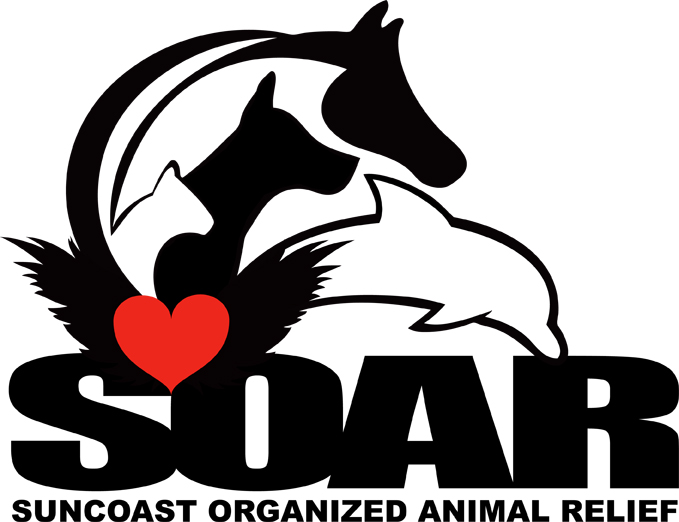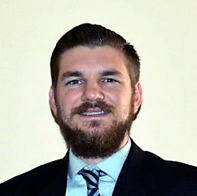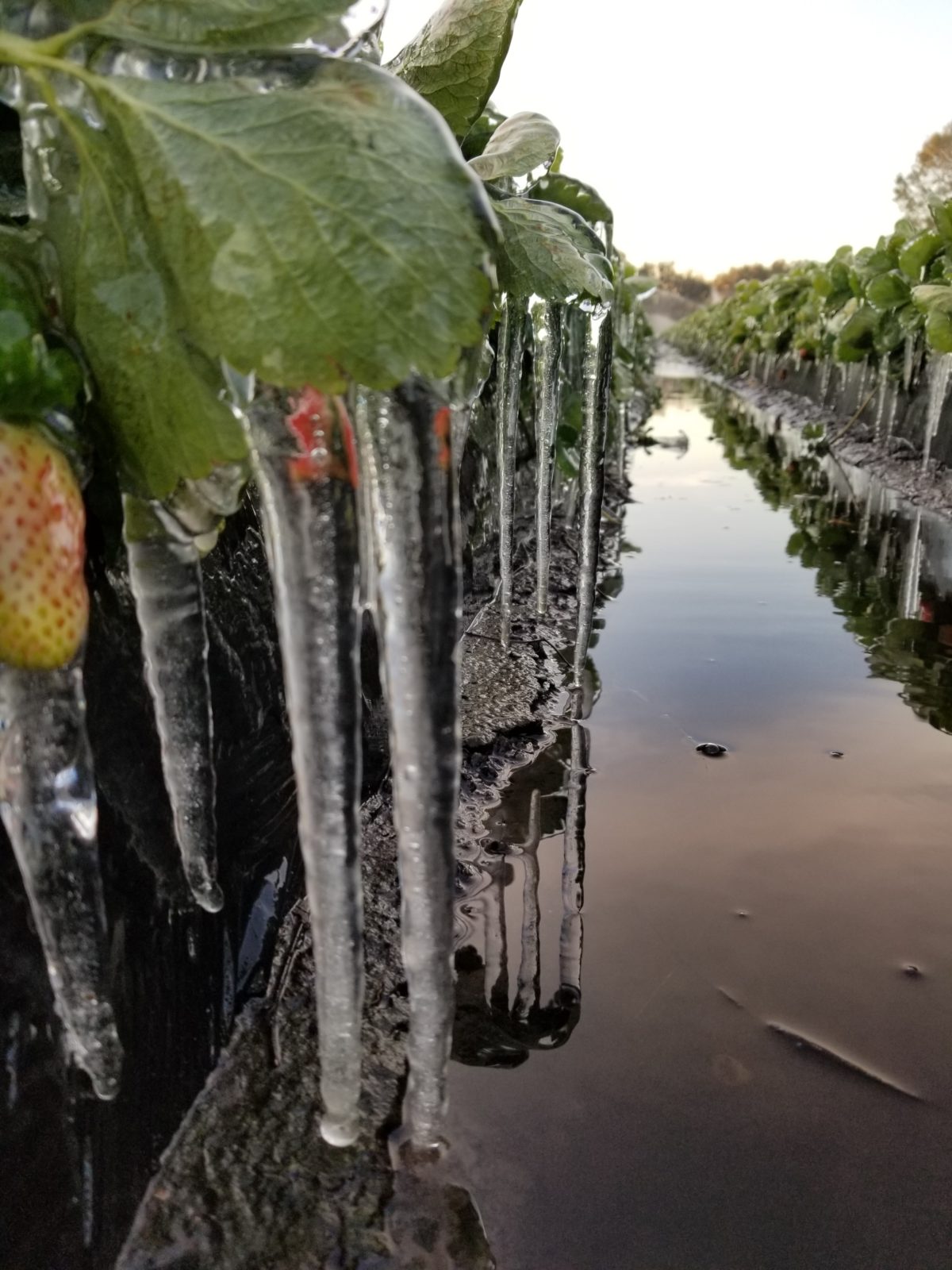Bob: Depends on your taste of berries. Some people like small berries. Some people like bigger berries.
Kyle: What’s the difference?
Bob: Well, some are small, some are big.
Kyle: Hey, everybody. Kyle Sasser, Great Things Tampa Bay and before we get started today just wanna give you a quick overview. Making some changes. Cutting out the intro music. Cutting out a lot of the beginning intro just because, personally, I don’t like getting pounded with advertisements and, you know, action requests. You know, go to this website, go to that website, sign up here, like me here. So we’re cutting all that out. If you would like to support the podcast or interact with us we’re gonna put all that on the end. And we’re also adding another segment towards the end. We’re playing local musicians’ music. So I’ve reached out to a bunch of local musicians. They have been more than kind enough to allow me to play that. So it’s gonna be basically a single track at the end from every genre imaginable. Tampa is crazy so far as music goes. And some of the artists and songs that were sent to me were so good that I actually had to listen to them three times in a row and just got some chills listening to them. So be sure to stay tuned and if you like the change, if you don’t like the changes go to our website. I promise I won’t be doing a whole bunch of actual requests at the front here but our website greatthingstb.com. You can go there and let me know if you like it or if you don’t like it.
Hey, everybody. It’s Kyle Sasser with Great Things Tampa Bay and this is episode 24. Today we are interviewing Mister Bob McDowell. He is a local strawberry farmer out at Fancy Farms over in Plant City, Florida and, funny enough, I didn’t know it was Fancy Farms till I got out there. Got a little history with them. Personally, I went to high school with the owner’s daughter I believe. I think it’s the owner’s daughter. Didn’t ask that particular relation but I know they’re related. And also, my wife was in her sorority. So pretty funny connection when you drive up, see to the sign, you’re like, “Oh, yeah. I know you. I know you guys.”
So in this interview we’re going to be talking about all of the secrets of strawberry farming which sounds, you know, maybe it might sound a little boring to you. You know, you’re like, “You throw some water on it, you throw some fertilizer on it.” But some interesting facts and figures, how they pick the strawberries, and basically just the overall process. I know I have lived in the area for 38 years and I was definitely not aware of a lot of the things that he went over. So be sure to stay tuned. And stay tuned to the end because we’re gonna have a local musician playing us out on the outro and I promise it’s good stuff. I don’t take just anybody. I make sure to listen to it and I refuse to play garbage. Put it that way. Although, you know, the actual band Garbage, if they were local, would probably make it on there so. Anyway, without further ado, here is the interview with Bob McDowell.
Hey, everybody. This is Kyle Sasser and I’m here with an old friend of mine from high school and I’ll let him introduce himself.
Bob: Hey, I’m Bob McDowell. I work at Fancy Farms, Plant City, Florida.
Kyle: Yeah. And he is a strawberry farmer extraordinaire out here in Plant City.
Bob: I don’t know if you’d say that but I’ve been doing it for almost 15 years.
Kyle: Yeah, yeah. So you’ve got some good experiences. Gonna share some of that with us today. So let’s just start off. What all is entailed in making a strawberry?
Bob: Well, a good strawberry plant makes a good strawberry and some good growing weather makes a good strawberry.
Kyle: So, and what would a good growing weather be?
Bob: Good growing weather would probably be in the 50 to 70-degree range. Not…very little rain. No fog around.
Kyle: Yeah, that’s good.
Bob: That’d be good. And a good berry price. Make some money.
Kyle: Always a plus, always a plus.
Bob: Yeah, yeah.
Kyle: So, listeners, today the day that we’re actually doing this interview we had the freeze last night. Right?
Bob: Yes. We did have the freeze.
Kyle: Yes.
Bob: It was a…it got quite cold. They predicted 28 for us and we actually got to 23 degrees.
Kyle: So explain to us what happens during a freeze. Like what happens to the plant and how…well, like what steps do you take to protect the berries?
Bob: Well, during the…the day before we usually go out and we crank the pumps up, make sure the sprinklers aren’t broken off or, you know, make sure they’re all functioning properly, the pumps are functioning properly. We have plenty of the fuel for them for the night. And then when…we’ll go to bed that night and watch the thermometer. We might get some sleep. We probably don’t. Last night they predicted 28 and we figured, you know, when it…when the temperature got to about 33 degrees we’ll go ahead and crank the pump up because there’s not gonna be frost and the wind is gonna be blowing bad. We need to start making ice.
Kyle: Yeah.
Bob: And the reason we make the ice is to create a cocoon basically around the strawberry plant and it’ll maintain 32 degrees around the plant or around the berry and the plant itself. The berries can take 30 degrees. You know, some nights we’ve run…we’ve never run water. Got 30 degrees, didn’t run the water. Didn’t have any damage.
Kyle: Yeah.
Bob: But when it gets down to the mid-20s we’ll have problems.
Kyle: Yeah.
Bob: So the reason we keep the pumps running is to keep making ice because if you make a coat of ice on there for an hour or so and you turn the pump off, well, the ice will get colder than 32 degrees. That’s exactly why we just keep it running and running.
Kyle: So it’s like a physics problem? You basically have to keep the water on there and the water helps keep it at 32 degrees but it has to keep being new water?
Bob: Yes, yes, yes. The making of the ice creates some heat.
Kyle: Yeah.
Bob: And that’s what protects the berries and the flowers also. You need to get a coating around the flowers too because they will also die.
Kyle: Yep. And when I pulled up today Mister Grooms was nice enough to show me some examples of some crop damage. Would you like to describe the damage that we saw?
Bob: The damage that you saw was the…he had some flowers that he pulled from the field and usually a flower is nice and yellow. And these flowers were actually brown on the tips. And when it turns brown on the tip the flower will not pollinate because it’s already dead. And it’ll make a misshapen berry that we can’t harvest.
Kyle: Yeah. And it’s crazy to me just like, because I know absolutely nothing about farming really, the damage shows up that rapidly. Because that was just from this morning, right? Like the last overnight?
Bob: Yes. Well, you can…we went out in the field while the water was running and saw damage.
Kyle: Oh, wow. That’s crazy, that’s crazy. So okay. So we did have the freeze. Overall things are pretty good here. The crop came through pretty well and all.
Bob: Yeah, for the most part. There is gonna be damage because the wind blew. It was really bad blowing.
Kyle: Yeah.
Bob: It got to 23 degrees which they predicted 28 which that didn’t work out very well.
Kyle: Yeah.
Bob: This is one of the…this is…I’ve considered a bad freeze really.
Kyle: Yeah.
Bob: And we hadn’t had one of those since 2010, 2011.
Kyle: Yeah. Like I was saying like…so I live over in Saint Pete but I’ve lived…like I grew up here in Plant City, I’ve lived in Tampa, I’ve lived in Lakeland and it’s been probably, like you say, like about seven years, six, seven years since it’s really we’ve had a hard freeze overnight. Like even in balmy St. Petersburg over there it was cold.
Bob: Yes, it was very cold. We made a lot of ice on the plants last night.
Kyle: Is there any fix for the damage? You just kinda have to just kinda go with it?
Bob: No, there’s no fix for the damage. You just move on and that’s just part of the crop we will end up losing.
Kyle: Yeah. Just part of the deal.
Bob: Yeah, it’s part of farming.
Kyle: All right. Well, that’s cool. So the berries, you told me earlier that the berries have already been coming in and you’ve been doing some picking already.
Bob: Yes. Did you wanna hear a rundown of how we get to a berry to pick?
Kyle: Yes. We started with the climax, you know, with the ice and the crop damage and the farmers on the television talking about the freezes. Well, let’s go back to the beginning and, you know, see exactly where we start. Like when did we…like how do you start a season?
Bob: Well, typically in the summer, we have a cover crop growing and it’s clay peas or hemp or some other top of cover crop. It builds the nutrition in the soil, keeps from soil erosion. We’ll start like in July cutting, knocking that down and prepping it. And come about middle of…well, the…I guess the end of July we’ll go in and start laying the plastic.
Kyle: Oh, okay. So that’s when you till the fields and kind of pull them up in rows and…
Bob: Yes, yeah, yeah. We’ll pull up in rows, lay the plastic, bury the ends. We have a tube down the center of the bed, we call it drip tape, and that’s how we water and fertilize our berries.
Kyle: Okay. So no more of the white pipe sticking out with the…
Bob: Well, we still have those for frost protection but we only run them for frost protection. So we run the drip tape and it conserves water and it’s better on the plant because plants aren’t getting wet.
Kyle: Yeah.
Bob: But once we lay our plastic and we’ll wait about two weeks, three weeks, get a roadway set, get every…you know, get all the plastic…it takes probably two weeks to lay the plastic and get our roadways ready. Other farmers, it takes longer. You know, just on our farm that’s about our time span of how long it takes. It depends.
Kyle: Yeah.
Bob: And if a hurricane comes, Hurricane Irma come through, it put a wrench in the program for us.
Kyle: It does that. It definitely does that.
Bob: Yeah. But after we do all that, we’ll get our plants in. The last week of September through the middle of October we’ll start planting. And we’ll put the berry plants in a row, hand plant them in and then…
Kyle: So they’re actually planted by hand? They’re not…there’s no machine?
Bob: Well, there’s a machine that’ll punch the hole in the plastic for us.
Kyle: But somebody’s gotta…
Bob: Somebody’s gonna come in there and put the plant in by hand.
Kyle: Wow.
Bob: And there’s roughly 18,000 plants per acre.
Kyle: Yeah, that’s…I did not…like I did not realize that. At…like I grew up next to a strawberry farm and I always just figured one of the machines there ran by it, like, you know, probably the one that poked the hole would put the plant in as well.
Bob: Yeah, that…yeah. It don’t work that way.
Kyle: Is it just the plants are too sensitive at that point?
Bob: There’s not a machine that will actually set that for you because each plant is unique.
Kyle: Okay.
Bob: The root mass is different on each plant and the crown of the plant, they’re different sizes. So there’s no uniformity. You know, they are somewhat uniform but there’s no machine that can actually do that.
Kyle: Wow. That’s crazy.
Bob: But going back to our plants. We get our plants from North Caroline, California, and Canada, and Nova Scotia.
Kyle: Okay.
Bob: And we got some from Colorado. They grow them in the higher elevations which are cooler. The sock plants, and then they’ll dig them in a nursery and they’ll bring them to us in refrigerated trucks in boxes.
Kyle: Wow.
Bob: And then after that then we’ll plant them in the ground and then we turn the water on. The reason we turn the water on during the heat of the day is to keep them cool.
Kyle: Yeah.
Bob: If you do not run the water the plant will just wilt and die.
Kyle: Right. So are they…I’m guessing they’re not native to this section of Florida then?
Bob: I don’t know if they are. Well, they are…they’ve been growing here about a 100 years.
Kyle: Yeah. That’s true. I think I’ve seen some out in the wild.
Bob: Yeah.
Kyle: I see them walking around in various places.
Bob: So once we get our berries planted within usually three to four weeks we’ll pick our first berry. The plant will typically establish itself growing. It’ll push out a few leaves and then it’ll push out some flowers. From flower to harvest is typically three weeks when it’s warm.
Kyle: Yeah.
Bob: When it gets cool we might go to four, four and a half weeks from the flower till all the environmental conditions happen.
Kyle: So is there…so like citrus, is there any rule like if you have like a cold snap at a certain point it’ll put a certain sweetness on the strawberry or is that just for citrus?
Bob: For strawberries the longer the berry stays on the bush, the sweeter it will get. It will actually mature slower which will create more sugars in the berry which will make it sweeter.
Kyle: And I think that’s what everyone is interested in with the strawberries, how sweet it is.
Bob: Yes, they are. And it depends on what variety you plant. There’s many, many varieties of strawberry plants. You know, it’s just not a green plant and red strawberry. You know, they’re like people. They’re all different.
Kyle: They have their own like cultivars or whatever?
Bob: Yes, they do. And the strawberry lab IFIS.
Kyle: Sounds like a very cool place.
Bob: Yeah. So University of Florida actually is part of that deal. I don’t know if you ever heard of that place.
Kyle: Yeah, on occasion.
Bob: It’s down in Baum. There’s some doctors and scientists that…and plant breeders that come up with the different varieties from Florida. There’s other varieties from California, and all over the United…or the…actually the world, they actually have their own varieties. And another thing on our Florida variety is that the breeders had developed, we get the opportunity to grow the berries and then other countries actually grow the berries too. Our Florida varieties are grown in other countries like Israel and, gosh, Spain.
Kyle: Very cool.
Bob: You know, so it’s not just a local variety that we’re growing. Our varieties go out across world.
Kyle: Although, you know, all strawberries grown in Plant City are the best just by default.
Bob: Of course. It must be the dirt.
Kyle: Yep. So you mentioned to me earlier that you have some biologists and things on staff. I didn’t know if you wanna go into that a little bit. Just like what they do, what they look for, like pest issues and things like that.
Bob: Well, the lab at Bum they have somebody that looks at bugs. I don’t know the technical term for it. And he’s…
Kyle: Bugs is good enough.
Bob: Yeah, he’s a bug man. He’ll test different insecticides, make sure they’re effective. They’ll let us know of some new bugs coming out. You know, there’s always, you know, a new invasive species or something that’s gonna attack a berry plant.
Kyle: Yeah, or things adapting or…
Bob: Yeah. And they’ll come up with different strategies how to maintain these bugs to where they won’t damage the fruit.
Kyle: Yeah.
Bob: And then we’ve got another one that deals in diseases.
Kyle: Interesting. So like funguses, molds?
Bob: Yes, yes, funguses and molds. One called gray mold.
Kyle: Sounds dire.
Bob: Yes. Yeah. It’s not very good. And they test different methods of preventing it and curing it and they test the chemicals and they actually study how the mold actually grows and how it develops in the weather conditions of when it’s actually growing because when it’s real cold like this, it doesn’t like to grow.
Kyle: Yeah. Makes sense. Makes sense. Very fascinating. All right. So we have the flower there and the flower is all good. It’s made it through the winter and it’s put on a berry and now it’s all ripe. It’s very sweet because it’s been on there a long time.
Bob: Well, yeah. Right now, but back in September we started making flowers and we ended up started picking like the last week of October just a few strawberries. Not very many. But we’ll typically harvest the berries every three days to four days. If it’s real cloudy the berries won’t ripen as fast so we’ll end up going another day in between picking.
Kyle: And that’s crazy. Like even just a cloudy day can affect when like dozens of people are gonna have to work, right? Like the picker, like for people to come in and pick just a cloudy day is gonna push that out a day.
Bob: Yes, it will push it out a day. And we’ve set our farm up to where we’re on a rotation. We pick a third of the farm every day. So we’re picking every day. We try to. If it’s cloudy or we’re gonna have a freeze coming, we will pick ahead and get some of that fruit off. Then they’ll have a day or two off and then we’ll finally get some sun in. They’ll start ripening them up then we’ll go back to picking again.
Kyle: Yeah. So it’s not just the people around Florida that like the sun, the plants and the berries like it as well.
Bob: Yes, yes. The plants do like it.
Kyle: That’s good.
Bob: And then once we…well, we’ll start picking. Our berries will go to the market and they’ll go to Publix. I know our berries go to Publix, and you’ll see the Wish Nest or Wish Farm’s label.
Kyle: Never heard of them.
Bob: Yes. You’ll see the Wish label and you’ll see a “How’s my picking?” sticker on the clamshell. It has a number, a little special number on it, and you can go to their website, put that little number in there and you can write a review on them berries.
Kyle: Wow. So you’re…it’s like your back office system is so fine grained nowadays, sorry, this is the IT guy in me coming out, that you actually know who picked what strawberries out in the field?
Bob: Yes. We actually…you know, the consumer doesn’t know exactly who picked it and which farm it does, but it gives the Wish Farms an idea if there’s a problem or if them berries were awesome. They’ll let the grower know what’s going on, “Hey, you know, these people really loved these berries, you know. You need to keep doing this kind of deal.”
Kyle: Keep doing whatever you’re doing.
Bob: Or, “Them berries, they weren’t very good. You know what you did wrong,” type deal.
Kyle: “We took them but we probably shouldn’t have and we both know it.”
Bob: Yeah. And that’s a new thing we’ve been doing for probably five or six years called trace back. Traceability.
Kyle: That’s cool. That’s very cool.
Bob: It’s somewhat similar to the tomato incident. They have traceability exactly in…
Kyle: Give me some backstory here because I’m in the dark. I don’t know.
Bob: Oh, you don’t know what happened?
Kyle: I don’t. Because I know we grow tomatoes here like down in Ruskin, that’s their thing.
Bob: Yes. It was probably six, seven years ago maybe, there was a big outbreak of something with some tomatoes that some people got sick on.
Kyle: Yeah.
Bob: Well, come to find out them tomatoes were not grown in the United States. They were imported tomatoes which got these people sick.
Kyle: So the Ruskin tomatoes did not make anybody sick? Just wanna clear that up.
Bob: That’s right. That’s right.
Kyle: Yeah.
Bob: So, but it did decimate some of the tomato growers. They did go out of business about it.
Kyle: Yeah, because people backed off of buying tomatoes and there was questions? You know, people were getting really sick. I think…was there any deaths I think?
Bob: I think there was.
Kyle: Yeah.
Bob: I think there was some deaths.
Kyle: I remember that story now that you mention it so…
Bob: And coming up on the regulatory stuff, we have licenses to spray chemicals. You have to have a license to actually purchase chemicals and actually put them out.
Kyle: So like the pesticides and…
Bob: Yes, the pesticides. We really don’t wanna spray pesticides but under a necessity we have to to control some of the pests that are out there in the field. And sometimes we’re not spraying for pests. We’re spraying for a fungus that’ll grow on the berry. And, of course, you know, we don’t wanna spray because they cost a lot of money. It costs a lot of money, that cuts into what money we could make.
Kyle: Yeah. Like, you know, Dow Chemical, they don’t just give this stuff to you for free.
Bob: No, they don’t. They may give you a bottle and say, “Here, try.”
Kyle: Yeah. And you’re not buying like, you know, a little, you know, half liter bottle at Home Depot. You’re buying hundreds, thousands of gallons of this stuff.
Bob: Yes, we are. And another thing that people see a sprayer out there, we might not be spraying for anything. We’ll spray plant nutrition which would be nutritional stuff on them like a fertilizer to make them healthy or calcium. One thing about calcium we’ll put on the plant, calcium is a nutrient that is very hard for the plant to uptake. It’s one of the hardest nutrients for the plant to uptake which will make the berries firmer.
Kyle: Interesting.
Bob: And when the calcium gets to the cells, in the cells, it’ll make the cell stronger which will prevent the funguses from actually going into the strawberries itself which is more like a fungicide.
Kyle: Yeah. So just because you see like, you know, the big tractor with the big white tank and the stuff spraying everywhere it doesn’t mean that, you know, death is coming out of there. A lot of times it’s gonna be nutrients and stuff that’s actually beneficial for the plants.
Bob: Yes. Yeah.
Kyle: All right. Good to know. Good to know.
Bob: Yeah. You know, a lot of people don’t…they realize, you know, they see a sprayer, they think of skull and crossbones, you know.
Kyle: Yeah.
Bob: And that is not the fact. Because I’ve sprayed on this farm for 15 years and that’s not the fact all the time.
Kyle: Yeah. And it’s really just a simple fact of farming that you basically have a huge buffet out there that’s, you know…basically it’s like a huge buffet of top class stakes for various bugs and funguses and stuff like that. So just like you’d have to keep people away from free steaks, you have to keep the, you know, the pests away from the strawberries.
Bob: And there’s one pest, I’ll bring up, that’s called thrips. I don’t know if you ever looked at thrips.
Kyle: Can I get a spelling on that?
Bob: It’s T-H-R-I-P.
Kyle: All right, so thrip.
Bob: Yeah. And there’s different species of thrips, but the thrip will go in the flower and it’ll eat on the flower itself, and then when the berry matures it’ll have brown veins all in the strawberry. We can harvest it or nothing.
Kyle: Yeah, that does not sound very appealing.
Bob: Yeah. And they’re a challenge to control.
Kyle: Well, let me ask you this because it piques a question of mine that I’ve always had. So when you picture the strawberry in your minds, you know, you have green top and, you know, sort of the heart shape to it. What causes it to turn into like the really wide strawberry?
Bob: Okay. You’re wanting the cone berry. And the berry you’re talking about is called a fan berry which we call the fan berry. And it’s all in the plant itself, the makeup of the plant. Sometimes some varieties will produce only cone berries.
Kyle: Okay.
Bob: And some varieties will do the cone and the fan berry all at the same time.
Kyle: So it’s just different cultivars then?
Bob: And it’s like people. We’re all different.
Kyle: Yeah, that’s true.
Bob: Every strawberry is different.
Kyle: Interesting.
Bob: And then there are some strawberries that if you cut them in half, they’re white on the inside instead of red.
Kyle: Yeah.
Bob: And then we’ve got another variety, you cut it in half, it’s hollow in the middle.
Kyle: Well, that sounds pretty crazy.
Bob: Yeah, yeah. You know, they’re hollow.
Kyle: Like it’s almost like a strawberry pepper like just from that description.
Bob: Yeah. Yes.
Kyle: Freaky.
Bob: And another thing, you might…not a lot of people know this, which I was explaining to somebody about the moon, the phases of the moon. They affect the strawberry itself.
Kyle: You’ve gotta tell me how.
Bob: Okay. Whenever I got into farming they told me about the moon. I said, “No, you’re full of it.” But it is actually true. On the full moon, the berries will actually get softer.
Kyle: Huh? Do you think that’s just like the water or it…?
Bob: Well, I don’t know what the water can do but the moon…on a full moon the berries will actually get softer.
Kyle: That’s crazy.
Bob: And then on the fall of the moon they’ll actually…or, you know, the rise of the moon. They’ll be a much firmer berry.
Kyle: They’ll firm up a little bit? That’s crazy.
Bob: And, of course, we’re looking for a firm berry because we’re gonna pick it, put it in a clamshell. They’re gonna take it to a cooler and they’re gonna ship it up the road. And the firmer the berry, the longer it’ll ride and the better it’ll be once you get it in the produce store.
Kyle: Yeah. And one of the major, you know, hurdles with any sort of agriculture or produce is making sure it gets to the store all in one piece and, you know, in an appealing and edible state.
Bob: Yeah, because it’s a perishable item.
Kyle: Yeah.
Bob: Yeah, it’s not like potatoes, I guess. They could sit there for a month or, you know, onions type thing. You know, berries are tender.
Kyle: Just throw those damn things in a boxcar, send them across the country. Who cares?
Bob: Yeah, yeah. Yeah, well…
Kyle: Okay. Let’s start from the beginning. How long from the time you pick it till the time it shows up on a store shelf?
Bob: It can be…we…sometimes if…for like Publix, we’ll pick it today, that evening they will pre cool the…at the cooler…they’ll take the heat out of the strawberry if it’s warm outside because you can cool the berry down and it will…the decay will be less.
Kyle: Yes.
Bob: And then once we…they’ll cool it down. They’ll ship it to Publix’s warehouse right down the road from here.
Kyle: Yep. About a half mile.
Bob: Yeah. And then they’ll distribute it. Within probably three days they’re sitting on the shelf.
Kyle: So that fast?
Bob: It can be that fast. And then, of course, you have fresh strawberries or fresher strawberries.
Kyle: Yeah.
Bob: Now it’s a little different going north. You know, you may get to five to six days.
Kyle: Yeah.
Bob: But they’re trying to keep the distribution from the farm to the store as short as possible so the consumer gets the best product.
Kyle: Yeah, because you want them fresh and…so pretty much the strawberries you see in the store were probably…they were pretty much picked that week, just a few days beforehand.
Bob: Yeah. Oh, yeah.
Kyle: That’s pretty…like logistically that’s impressive to me.
Bob: Yes.
Kyle: It appeals to my nerd nature. Because there’s a lot of moving parts to make that happen.
Bob: Yes, there are.
Kyle: So how long is a typical strawberry season?
Bob: Our season, when I first started, we picked almost until the middle of May.
Kyle: Wow, okay.
Bob: And the reason being is the market, the price that we were getting for our berries. And in recent years we have pushed that up earlier to where the price of strawberries will drop where it’s not even profitable to pick them.
Kyle: Yeah.
Bob: And that’s because of California. Their season comes in, it knocks us out.
Kyle: Yeah. It’s always Florida versus California.
Bob: Yeah, yeah, yeah. And then our end of the season is typically…last year it was the last week of March.
Kyle: Okay. So that’s…yeah, a little bit after the…like I think we were talking about this earlier. The Strawberry Festival is usually, I think, like beginning of March to mid-March.
Bob: Yeah, yeah. First week of March, I think.
Kyle: Yeah, something like that. And then…so the season nowadays goes a little bit past that to like maybe first week of April-ish?
Bob: Yeah. And the other thing that our shipper has acquired is we’ll do processed berries. We’ll take the berries that aren’t for fresh market and we’ll take them…we’ll pick them and we’ll cut the tops of them off and they’re actually taken to a processor, and they’ll slice them up and they’ll put them in ice cream.
Kyle: There you go.
Bob: And we…there’s a place off of Sydney Road here in Plant City that actually took our strawberries and put them in ice cream and sold that ice cream in the local stores at Strawberry Festival time.
Kyle: There you go. There you go. Locally grown.
Bob: And then there’s some other contracts where we’ll pick the berries and they’ll actually juice them and they’ll use them for like Coca Cola for flavored drinks.
Kyle: Okay. So like pulling the essence out? Like…
Bob: Yeah, yeah. Like a puree and stuff of that nature. And we’re able to harvest more berries that way.
Kyle: Yeah. So like these contracts, is there like a central clearing house for those or are they just negotiated one on one?
Bob: The contract is with our shipper. He deals with that. He just tells us to pick the strawberries and he handles all that other headaches because there’s a world of other things going on before that takes place.
Kyle: Yeah. I mean, there’s a lot of moving parts in this industry so…
Bob: Yes.
Kyle: And, you know, one important part of any business is having people, the experts do what the experts know and not have them doing, you know, other parts.
Bob: Yeah, yeah. You know, everybody has a purpose in the industry and they’re good at that purpose and that’s what they do and that’s all that we require them to do.
Kyle: That’s true. Was there anything else you want to talk about? Was there anything you wish that I would’ve asked you about today?
Bob: I don’t know. I hope that’s what everybody in Saint Pete wants to know about.
Kyle: All right. Do you still go to Plant City High School football games?
Bob: You know, I’ve been to two of them and that was before I went to Plant City High School. And once I went to Plant City High School I never went to a football game.
Kyle: You’re like, “Enough’s enough.”
Bob: Yeah, football wasn’t my cup of tea.
Kyle: I hear you. I hear you. Well, for those that don’t know…so Bob, you’re from Plant City here. I also grew up in Plant City. You know, we went to school around the same time.
Bob: Yep.
Kyle: And, yeah, lots of good times here in Plant City. It’s nice to be back here, stepping out and hearing the quiet, and looking across the strawberry fields.
Bob: Yeah, you got a nice look at the sunset this evening and, you know, we’re getting ready for another freeze tonight. They’re calling, you know, frost and freeze warning tonight.
Kyle: So it’s not gonna be as cold as last night though, right?
Bob: It better not be which at least it’s not gonna be that.
Kyle: Yeah. Because I thought I saw all the weather. It’s supposed to be warming up like as the week goes on.
Bob: Yeah, they’re calling for the mid-70s here shortly.
Kyle: Yeah.
Bob: But last night, I got up at midnight and, of course, I slept for an hour or two. Got up at midnight and we had the water on. We stayed up until 10:00 o’clock this morning. It finally got above 32 degrees.
Kyle: That’s cold.
Bob: Yes. Very cold.
Kyle: That is cold. I don’t have clothing for that weather.
Bob: Yeah. I don’t either. We got a heater in the truck.
Kyle: Oh, there you go.
Bob: Where it’s good.
Kyle: Like citrus, you don’t have like the big, you know, burners that you call can just put in the fields and just…
Bob: No. Well, actually those are outlawed now.
Kyle: Oh, really?
Bob: Yeah, because they burn, I think, diesel in them. Made a lot of smoke and they weren’t very environmentally friendly.
Kyle: Yeah. Well, you know, it was a…I remember being a kid and…because my parents or my…my mom’s dad lived over in Lakeland so we’d always go for the orange groves over there and, yeah, just seeing those things…
Bob: Yes, I’ve never…I’ve seen one. Never been around one running.
Kyle: Yeah. It’s very loud. So growing up next to the farm, they had one in the nursery that they would run and that thing would keep…
Bob: Wow.
Kyle: …would keep us up all night.
Bob: Now, a little history on me is my parents weren’t farmers or anything.
Kyle: Yeah. How did you get into this?
Bob: Yes. I’ve…my dad worked at a pipe shop, and I thought I wanted to be an architect. So I took the architecture classes in high school and thought I was gonna do a lot of drawing and drafting. And I worked at a pipe shop doing…running AutoCAD, about 16 years old running AutoCAD, building up shop drawings for pipe. And that was an interesting job. But I found out, I can’t sit in an office. I gotta be out in the open. You know, we’ve gotta do something different.
Kyle: Yeah.
Bob: You know, farming, you’re out in the open and about every month it changes. Your actual job has to actually changes throughout the year. Of course, you know, we’re picking for four, five months which that does…it’ll wear on you after three or four months. You know, it gets old.
Kyle: Yeah.
Bob: But the reason I got into farming is because of that.
Kyle: Yeah. Yeah, out under the sun and, you know, enjoying nature.
Bob: And one day…I knew Carl Grooms and I went to him and talked to him and we shook hands, said, “You’re hired.”
Kyle: Yeah, there you go.
Bob: You know, there was no contract or nothing. He said, “Kind of work Monday, you know, we’ll start.”
Kyle: Be here on Monday. Very old school, old school.
Bob: Yeah. You know, it’s been great ever since.
Kyle: So I guess last question. So picking strawberries. They have any fancy machine for that now or is it still you walk, you bend down, you pick it up?
Bob: They are working on a picking machine for strawberries.
Kyle: All right.
Bob: It’s like three years in the making and this year it’s supposed to be prototyped in the field and make sure it’s gonna work. And then they’re gonna work on it for, I think, another two years and then it will be commercially available to the farmers.
Kyle: So to make sure it doesn’t make like strawberry pulp?
Bob: Yeah, yeah. There’s a…that’s a whole another world.
Kyle: Because I know like the holdup on the automation, like strawberries are pretty sensitive. Like the plants are sensitive and they put multiple berries on, it’s not just like a one shot and they’re done.
Bob: Yes.
Kyle: Like some other crops. So you have to keep the plants in good health so they could keep producing strawberries throughout the season. And then the actual berries themselves are sensitive like…
Bob: Well, each strawberry is different, different size, different shape. And they ripen at different times. So they’re different colors. So they gotta figure out how to find the right berry and to find the berry in the plant, it’s all…it’s in a different position. You know, each one is in a different position.
Kyle: Oh, so it actually has like optical and like artificial intelligence sort of to figure out?
Bob: Yes. They’ve got cameras down there looking at the berry.
Kyle: What?
Bob: And then they got some fingers that go down that’ll grab the berry and actually pick it off of the berry and then they have to put that berry in the clamshell, the cup that you see in the market.
Kyle: Like the green…or they’re clear now.
Bob: It’s the clear. They call them clamshells.
Kyle: Yeah.
Bob: So they gotta figure out how to put them in there, and then once they fill that clamshell, they gotta figure out how to put that in the brown box. Of course, nobody sees the brown boxes. Not unless you’re in Plant City seeing one at the back of our truck. You know? So they gotta…it’s a monster in itself, but once they get it working it will alleviate some of the labor issues we have here in Plant City.
Kyle: Yeah, and the brown boxes are basically containers that hold how many straw…?
Bob: Yeah, it’s typically eight pounds of fruit. We will pick in one-pounders mainly. There’s a two-pound clamshell that you’ll see which there are four clamshells in the box.
Kyle: Yeah.
Bob: And then we pick some four-pounders and those go to like Sam’s Clubs.
Kyle: Hefty.
Bob: Yeah, you know, you get a four-pound thing of berries.
Kyle: All right. So if somebody…whenever you personally go to the store to buy…well, I’m sure it’s probably been a while since you bought some strawberries, but if you were to find yourself in, let’s say, at Publix, you know, if you happen to run across one. I know they’re rare. So you’re in a Publix and you’re looking for some strawberries, what do you look for?
Bob: We’ll look for some berries that are, you know, fairly decent size. Depends on your taste of berries. Some people like small berries. Some people like bigger berries.
Kyle: What’s the difference?
Bob: Well, some are small, some are big.
Kyle: Oh. So taste-wise, they’re the same? Like one’s not sweeter than the other?
Bob: That’s correct and…well, sometimes the bigger berries, they’re not as sweet as the smaller ones.
Kyle: Good to know.
Bob: So sometimes the smaller ones are sweeter. It just depends on how the berry matured on the plant.
Kyle: All right. And we learned earlier that the longer the berry is on the vine…well, not vine. Plant.
Bob: Yeah, yeah, plant.
Kyle: We’re not making wine here.
Bob: Yeah. Yeah.
Kyle: The longer it’s on the plant, the sweeter the berry.
Bob: Yes.
Kyle: Thanks so much for being on here, Bob. And it’s been a pleasure.
Bob: All right. Maybe we can do this again.
Kyle: Yes, sir.
Bob: Thank you.
Kyle: Thank you.
So I’d like to thank Bob for taking the time out of his busy day to do that interview. Definitely a lot of fun. It was great to catch up and, shoot, I guess you could say. You know, I talked to somebody in the business who obviously has a passion for strawberry farming and is looking to share his knowledge. Great stuff. So if you’re at the Strawberry Festival or just moving about the area and you’d like to support some, just make sure you’re supporting our local strawberry farmers. So now we’re gonna move on to segment two, your tidbit of information.
Since we’re getting a little closer to the NHL playoffs, I thought I’d throw a little NHL knowledge at you. So interestingly, the NHL uses frozen hockey pucks in all of its games and they do this because the pucks are actually a rubber, you know, amalgamation, and they freeze them so they’re not too bouncy so they don’t, you know, bounce across the ice and all that stuff. And they’re actually replaced before every period and every time that is knocked, you know, over the glass and into the stands, which is terrifying. And the frozen pucks are actually kept in a freezer inside the penalty box.
All right, everybody. And that almost wraps up the podcast. We just have the music playout and just some odds and ends here on the end. I hope you like the new format. Definitely trying things a little different, trying to tighten things up. And if you like it, if you don’t like it, if you hate it please go to our website which is greatthingstb.com. That’s G-R-E-A-T-T-H-I-N-G-S-T-B.com and we’re doing lots of cool things there. So not only do we have all of the extensive show notes, information, blogposts, contests and all that good stuff there, I’m actually building a community. So you are able to come there and post things and interact with other fellow Great Things Tampa Bay’s listeners. One thing that I would like to also add is that I’m also looking for your input. So if you’re in a band and you would like to be featured on the podcast, if you would like for me to go try a place out, just go to the website and you can do so there.
Anyway, without further ado, as playing us out here on episode 24 is Trinity, and this is “Precious Memory.” They’re a bit of a Caribbean reggae band. Very good stuff, very high quality, and hope you enjoy it. If you’d like to find out more about them, please check out the show notes. We will have a link to their Facebook page or website there. So thanks for tuning in to Great Things Tampa Bay, and be sure to share this with your favorite person. Thank you.
[music 00:37:23 – 00:43:03]
